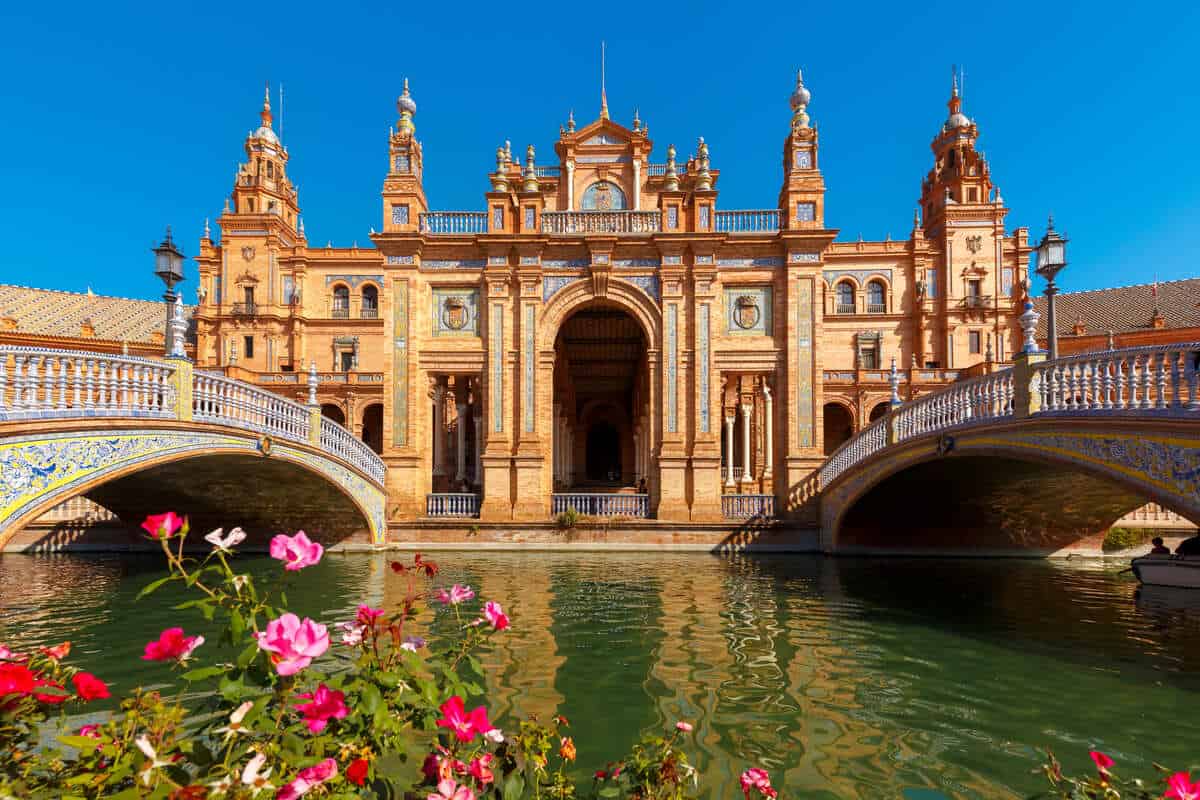With the peak travel season in its demise, fall will soon be upon us, which may spell bad news for sunseekers heading to Europe.
While it’s true it gets surprisingly hot in summer, the old continent cools drastically over autumn, as well as suffering from a sharp increase in precipitation levels, in general.
Come September, you may expect more cloudy, rainy days across much of Europe, particularly its Northern half, but one spot in particular looks set to remain perfectly sunny and potentially hot like summer when the off-season starts.
If it’s a late European beach getaway you’re craving, this is where you should be headed:
The Land Of Eternal Springtime
Located in the Southwest of Spain, close to the border with Portugal, the autonomous province of Andalusia is home to beautiful sandy beaches bounded by the azure Mediterranean Sea, fast-developing resort zones, imposing fortresses, and cobblestone towns.
It may sound as if this description could apply to virtually anywhere in Southern Europe, but unlike France’s Cote d’Azur or Italy’s Adriatic coast, there is a reason why Andalusia stands out among the rest: one of its many nicknames is ‘land of eternal springtime‘.

That is because autumns and winters in this part of the world are hardly an existing concept, at least in the way you’d imagine them to be traditional, with temperatures plummeting and freezing gusts of wind that could cut through one’s soul.
In fact, you would be wise to deliberately avoid visiting Andalusia in summer when the heat is at its peak, as thermometers can easily reach 120 degrees (F) and higher in some spots, such as Cordoba, dubbed Spain’s hottest city.
Andalusia Is The Hottest Place In Europe

Andalusia as a whole is known as the hottest region not only in Spain but all of Europe due to the hot air that constantly blows in from an arid North Africa, a stone’s throw away from mainland Spain, on the other side of the Mediterranean.
We wouldn’t be keen on vacationing in the regional capital Seville, dubbed the ‘Iberian oven’, nor the busy resort city of Malaga over summer when it’s quite literally too hot to be outside, but we’d pack our summery shorts for an off-season Andalusian break any day.
Believe it or not, Seville continues to enjoy warm highs of 90 degrees in September, decreasing to only 78.8 on average in October.

It cools further in November, down to an average of 68 degrees, but it just doesn’t really ‘do’ fall or winter as London, Amsterdam, and the like do.
You Can Still Swim At Andalusia’s Beaches In Spring
Malaga is the same, with a pleasant high temperature of 75.2 throughout October, the peak month for fall travel, and lows of 59, mostly at night.
Other popular destinations in Andalusia’s scenic Costa del Sol, the aptly-named Sunny Coast, such as Marbella and Estepona, are also no exception.

As reported by The Olive Press, August has arrived in the region with ‘warm air masses and tropical nights’, at a time when temperatures are already somewhat decreasing across Europe’s Mediterranean South.
If anything, this means Andalusia-bound vacationers are poised to experience yet another scalding autumn.
An Inestimable Cultural Wealth
Other than its year-round sunny weather, Andalusia is famous for its host of historical attractions. Having been ruled by Phoenicians, Romans, and Muslim caliphates from North Africa, it has an incredibly diverse cultural and architectural heritage.

The largest fortress in the medieval Moorish world, the Alhambra, is located in Granada, at the foot of Andalusia’s Sierra Nevada, having survived to this day as a reminder of the province’s Muslim past, and it’s definitely a bucket list item worth checking out.
Seville is well deserving of a visit, too, and you’ll want to reserve a couple of days or more to explore this sprawling capital, where a colorful historic center awaits you, the Bohemian atmosphere is infectious, and a landmark cathedral, formerly a mosque, towers above a charming plaza.

The Great Mosque in Cordoba, built during the Muslim occupation of Andalusia, is yet another Moorish-era structure tourists should not sleep on, especially when it’s a UNESCO World Heritage Site recognized for its well-preserved Islamic elements.
Moreover, Ronda is where you’ll find Spain’s most famous bridge, spanning a deep gorge, where traces of Roman and Moorish civilizations can still be seen.
Finally, take a road trip across the Andalusian countryside, where you’ll be met with whitewashed, medieval villages etched onto limestone cliffs and perched atop hilltops, most notably Setenil de las Bodegas, where dwellings were built beneath rock overhangs centuries ago.

Andalusia is easily one of the most fascinating destinations you could explore in Spain, and with its balmy weather well into early November, it is unlikely you will have to pack heavy coats to visit in the next couple of months.

